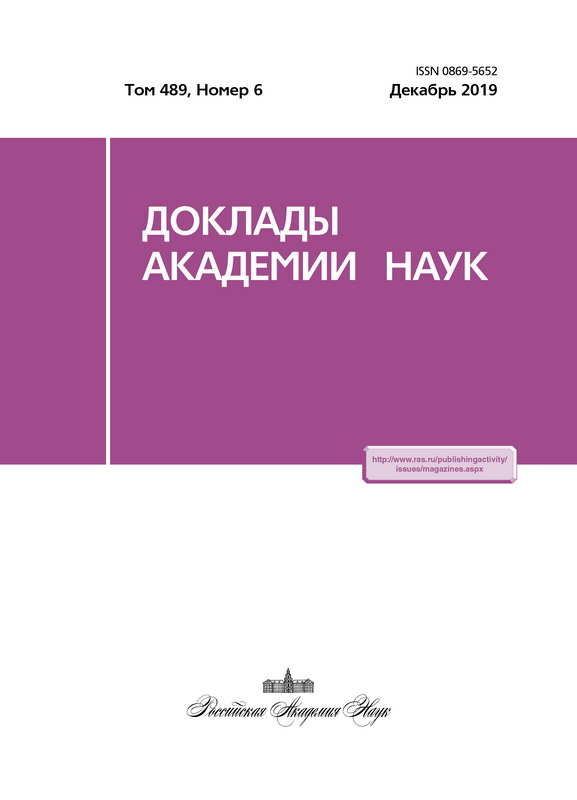Структура рельефа и гравитационного поля планет: правило Каулы - следствие законов теории вероятностей А. Н. Колмогорова и его школы
- Авторы: Гледзер Е.Б.1, Голицын Г.С.1
-
Учреждения:
- Институт физики атмосферы имени А.М. Обухова Российской академии наук
- Выпуск: Том 485, № 4 (2019)
- Страницы: 493-496
- Раздел: Геофизика
- URL: https://journals.eco-vector.com/0869-5652/article/view/14238
- DOI: https://doi.org/10.31857/S0869-56524854493-496
- ID: 14238
Цитировать
Аннотация
Более 50 лет известно эмпирическое правило Каулы: коэффициенты разложения по сферическим гармоникам флуктуаций гравитационного поля планет и рельефа их поверхностей убывают как квадрат номера гармоники. Это было найдено также для Венеры, Луны, Марса, астероида Веста и совсем мелких небесных тел. Обратно квадратичные линейные спектры найдены и для различных типов участков земной поверхности в масштабах до сотни километров. Отсюда следует, что спектры углов наклонов рельефа постоянны, т. е. являются “белым шумом”. Тогда они d-коррелированы по горизонтали. Именно в этих предположениях выведены законы случайных блужданий А. Н. Колмогорова 1934 г. Используя их, выводится уравнение диффузии вероятности рельефа по горизонтали с линейным коэффициентом диффузии D. По эмпирическим данным для Земли величина D = 1,3 ± 0,3 м, а для Венеры почти на порядок меньше. Уклоны сопротивляются ветру, вдоль них сыплется порода, течёт вода. Данное рассмотрение превращает правило Каулы в закон случайных блужданий (по рельефу) Колмогорова 1934 г.
Ключевые слова
Об авторах
Е. Б. Гледзер
Институт физики атмосферы имени А.М. Обухова Российской академии наук
Email: gsg@ifaran.ru
Россия, 119017, г. Москва, Пыжевский пер., 3
Г. С. Голицын
Институт физики атмосферы имени А.М. Обухова Российской академии наук
Автор, ответственный за переписку.
Email: gsg@ifaran.ru
Академик РАН
Россия, 119017, г. Москва, Пыжевский пер., 3Список литературы
- Kaula W. M. Theory of Satellite Geodesy. Bleinsdell: Waltham, 1966.
- Turcotte D. L. Chaos and Fractals in Geology and Geophysics. 2nd ed. Cambridge: Cambridge Univ. Press, 1997. 398 p.
- Rexer M., Hirt C. // Surv. Geophys. 2015. V. 36. P. 803.
- Konopliv A. S., et al. // Icarus. 2014. V. 240. P. 103-117. 5. McMahon J. W., et al. // Proc. 47th Lunar and Planetary Sci. Conference. 2016.
- Kolmogorov A. N. // Ann. Math. 1934. V. 35. P. 116-117.
- Монин А. С., Яглом А. М. Статистическая гидромеханика. М.: Физматлит, 1967. Т. 2.
- Голицын Г. С. // Физика Земли. 2003. № 7. С. 3-8.
- Werner S. C., Harris A.W., Neukum G., Ivanov B.A. // Icarus. 2002. V. 156. P. 287-290.
- Голицын Г. С. // Метеорология и гидрология. 2018. № 3. С. 5-15.
Дополнительные файлы








